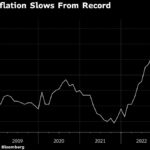The following is derived from the Editor’s Snapshot podcast summary of the latest issue of the CFA Institute Financial Analysts Journal. Institutional subscribers and logged-in CFA Institute members have full access to all the articles.
What’s in the CFA Institute Financial Analysts Journal‘s last quarter issue of 2021?
This edition opens with the final installment in our series celebrating the Journal’s 75 years. In “Environmental, Social and Governance Issues and the Financial Analysts Journal,” Laura T. Starks looks back over the Journal’s work since 1945 to show how academics and investment practitioners have been grappling with environmental, social and governance issues since well before ESG and socially responsible investing (SRI) terminology entered the lexicon. In fact, the Journal was first!

Over the years, we’ve been at the forefront of this knowledge development with articles on the social responsibility of business and its investors, the performance of investments following ESG or SRI principles, the effects of divestment, climate risk, impact investing, and the need for more ESG disclosure. Starks explores the essential ESG arguments then and now and demonstrates how the insights from many decades ago remain relevant for investment decision making today.
For earlier selections in this commemorative series reviewing 75 years of investment practice, look for Andrew W. Lo’s “The Financial System Red in Tooth and Claw: 75 Years of Co-Evolving Markets and Technology” in our last issue; the endowment study, “Seventy-Five Years of Investing for Future Generation;” William N. Goetzmann’s “The Financial Analysts Journal and Investment Management;” and the premiere piece in the collection by Stephen J. Brown, “The Efficient Market Hypothesis, the Financial Analysts Journal, and the Professional Status of Investment Management.
Our first research article in the latest issue treats the implementation of the Shanghai-Hong Kong Stock Connect in 2014 as an experiment and observes the effects on corporate investment efficiency that resulted. “Capital Market Liberalization and Investment Efficiency: Evidence from China” by Liao Peng, Liguang Zhang, and Wanyi Chen distills lessons about the markets as a whole based on observations in China. The authors demonstrate that market liberalization improves corporate investment efficiency, chiefly through better information disclosure and corporate governance, and ultimately promotes the sustainable development of the capital market.
For those unfamiliar with Chinese markets, an excellent cheat sheet early in the article provides a brief history of the liberalization of Chinese markets from 2002.
Since the seminal hedge fund replication work of William Fung and David A. Hsieh, “Hedge Fund Benchmarks: A Risk-Based Approach,” was published in the Journal in 2005, the bank risk premia market has emerged. Philippe Jorion offers the first analysis of these bank risk premia products compared to the corresponding hedge fund performances in “Hedge Funds vs. Alternative Risk Premia.” He finds several risk premia within equities, rates, and credit that yield significantly positive returns. In fact, their explanatory power improves on the well-used Fung–Hsieh seven factor model. In the quantitative hedge fund space particularly, this research highlights evidence of improved (and of course cheaper!) hedge fund index replication.

The next piece, by BlackRock’s Andrew Ang, Linxi Chen, Michael Gates, and Paul D. Henderson, is simply titled: “Index + Factors + Alpha.” It addresses the question of how best to allocate among the three return sources: market index, factors or smart beta, and alpha-generating funds. The authors derive and demonstrate their proposed method of using a Bayesian framework where the investor sets priors on Sharpe ratios or information ratios in excess of the index and factor strategies. Their step-by-step demonstration of how to implement this intuitively appealing model in your investment process is especially helpful.
In “Boosting the Equity Momentum Factor in Credit,” Hendrik Kaufmann, Philip Messow, and Jonas Vogt show how machine learning techniques can improve the quality of the equity momentum signals used in fixed-income investing. This is a cross-asset strategy that applies information from equities to predict returns in their corresponding credit listings. The real contribution, however, is to demonstrate how alpha can be doubled with boosted regression trees.
For a catch up on machine learning in general, “Machine Learning for Stock Selection“ makes for good pre-reading.
Rajna Gibson Brandon, Philipp Kruegerad, and Peter Steffen Schmidt next focus in on the dispersion among ESG ratings in “ESG Rating Disagreement and Stock Returns.” Other research covers why ESG ratings differ, this piece gauges how much they differ and which aspects are most dispersed. The authors extend the analysis to the relationship between these rating dispersions and cost of capital and by extension equity performance.
This research applies a particularly comprehensive set of rating providers — seven in total — so if you use ESG ratings at all, the authors’ data and rating comparisons alone are worth a look.

And finally, in “Tax-Loss Harvesting: An Individual Investor’s Perspective,” Vanguard’s Kevin Khang, Thomas Paradise, and Joel Dickson demonstrate that tax-loss harvesting is not one-size-fits-all. In fact, it’s not worth the cost for everyone. The researchers apply investor archetypes to represent the spectrum of clients who may be in the market for tax-managed investments and demonstrate that there is substantial dispersion in the outcomes. Some of that dispersion is environmental but most of the dispersion in benefits from tax-loss harvesting result from the investor’s own characteristics, particularly their own tax rates and how much offsetting income they have.
The Journal has featured a number of tax management articles recently, including last year’s “An Empirical Evaluation of Tax-Loss Harvesting” and “Tax-Managed Factor Strategies,” and “The Tax Benefits of Separating Alpha From Beta” in 2019. Private wealth practitioners can track the development of tax management through these selections.
And that closes out our coverage for 2021. Stay tuned for the first issue of 2022.
You can browse the Financial Analysts Journal going back to 1945 at tandfonline.com. The publisher provides an excellent search and browse experience to help you catch up on any topic you’ve missed. Logged-in CFA Institute members have full access to all our articles.
If you liked this post, don’t forget to subscribe to the Enterprising Investor.
All posts are the opinion of the author. As such, they should not be construed as investment advice, nor do the opinions expressed necessarily reflect the views of CFA Institute or the author’s employer.
Image credit: ©Getty Images / Savushkin
Professional Learning for CFA Institute Members
CFA Institute members are empowered to self-determine and self-report professional learning (PL) credits earned, including content on Enterprising Investor. Members can record credits easily using their online PL tracker.








